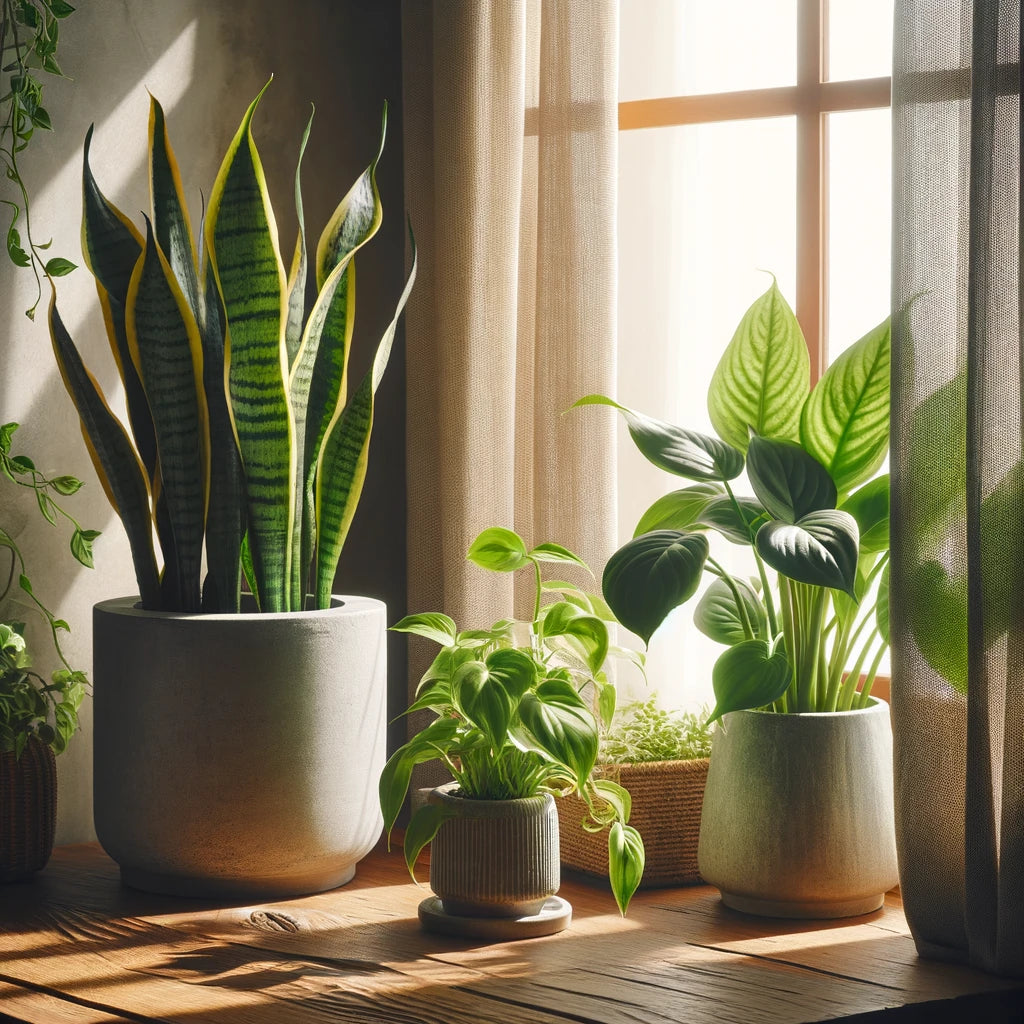
Healing Power of Plants: The Benefits of Green Spaces and Indoor Plants
Share
Plants have an extraordinary ability to improve our well-being and promote healing. Whether in the form of lush green spaces or potted indoor plants, they offer a range of physical, mental, and emotional benefits. In this article, we will explore the healing power of plants, highlighting the advantages of both outdoor green spaces and indoor foliage.
-
Improved Air Quality : Plants act as natural air purifiers, filtering out harmful toxins and releasing oxygen. Through a process called photosynthesis, they absorb carbon dioxide and volatile organic compounds (VOCs) from the air. This helps improve indoor and outdoor air quality, reducing the presence of pollutants that can cause respiratory issues and allergies. Indoor plants, such as peace lilies and spider plants, are particularly effective in removing pollutants like formaldehyde and benzene from indoor environments, creating healthier living and working spaces.
-
Stress Reduction and Relaxation : Being in the presence of plants has been shown to reduce stress levels and promote relaxation. The color green, abundant in natural settings, has a calming effect on the mind and can help alleviate anxiety and tension. The mere act of tending to plants, whether through gardening or indoor plant care, can serve as a form of mindfulness and stress relief. Incorporating green spaces into urban environments and integrating indoor plants into home and office settings can create tranquil spaces that contribute to mental well-being.
-
Increased Productivity and Concentration : Studies have indicated that exposure to plants can enhance productivity and concentration. Having greenery in workspaces or study areas has been shown to improve focus, memory retention, and cognitive performance. The presence of plants can also help reduce mental fatigue, making individuals more engaged and motivated. Incorporating indoor plants into office environments or adding green elements to educational settings can foster a conducive atmosphere for learning, creativity, and productivity.
-
Healing and Recovery : The healing power of plants extends to physical health as well. Research suggests that patients in hospitals or healthcare facilities surrounded by greenery tend to experience faster recovery rates, reduced pain perception, and lower stress levels. Nature views and access to outdoor green spaces have been linked to shorter hospital stays and improved overall well-being. Additionally, horticultural therapy, a practice that involves engaging with plants and gardening, has shown positive outcomes in various therapeutic settings, aiding in rehabilitation, stress management, and improving quality of life.
-
Connection with Nature and Biophilia : Humans have an innate connection with nature, known as biophilia. Spending time in natural environments or surrounding ourselves with indoor plants taps into this connection, promoting a sense of well-being and connectedness. Green spaces provide an opportunity to escape the demands of modern life and reconnect with the natural world. Indoor plants allow us to bring a piece of nature into our daily lives, even in urban environments. Nurturing and caring for plants fosters a deeper appreciation for the beauty and resilience of the natural world.
Conclusion : The healing power of plants is undeniable. Green spaces and indoor plants offer a multitude of benefits, including improved air quality, stress reduction, increased productivity, and connection with nature. By incorporating more greenery into our surroundings, we can enhance our well-being, promote healing, and create harmonious environments that support our physical, mental, and emotional health.
